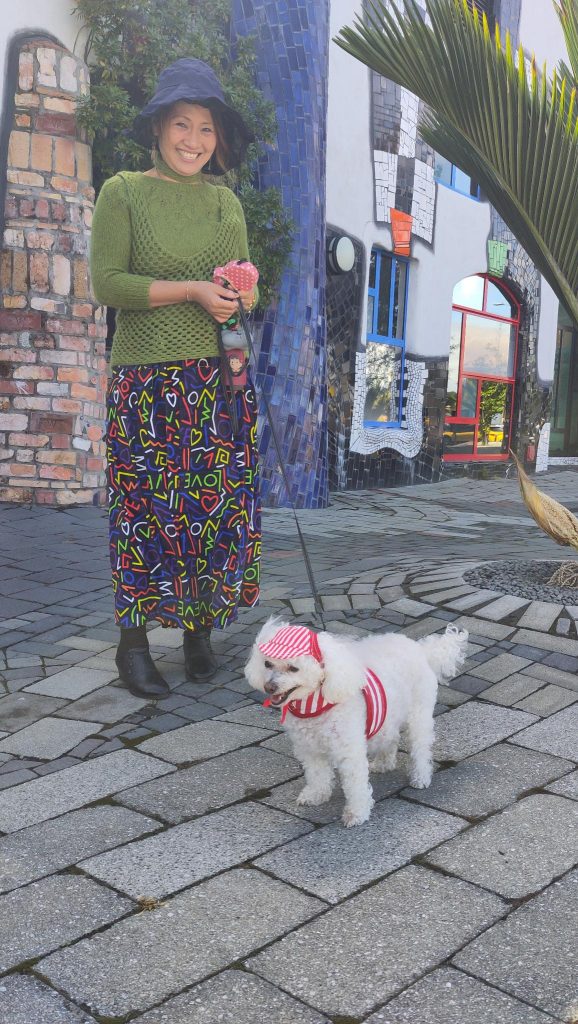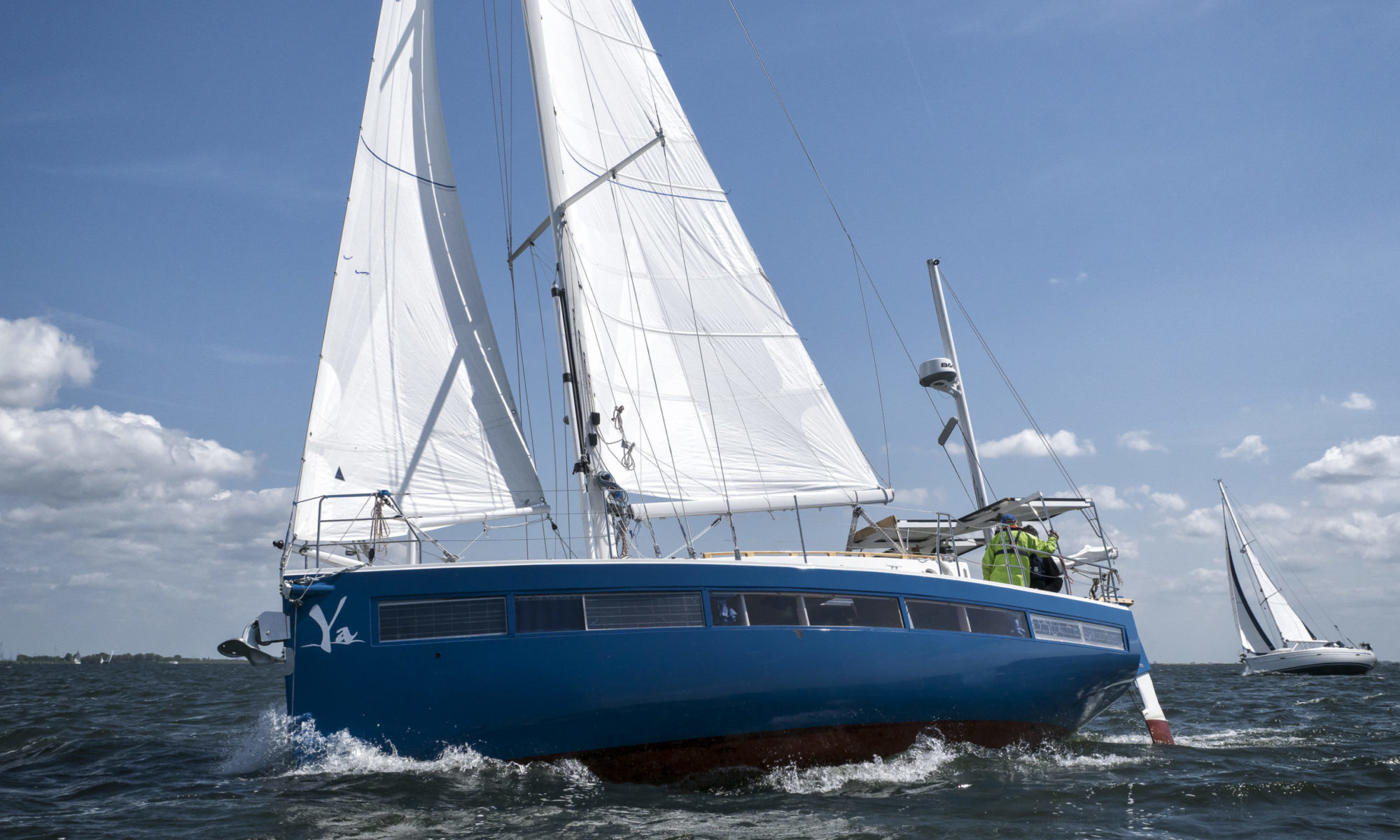Last week, we estimated we were halfway the voyage from Tonga to New Zealand. This week, we will find out how long it will take Peter, Maurits and Ya to complete the trip. Enjoy and find out what the real challenges of the voyage are!

Anchoring in the ocean
Sun Oct 19 2025 07:29:00 GMT+0200
Peter saw an irregularly high usage of the electricity. So he checked all devices, one by one. In this case he forgot to switch back the electric anchor winch. After two hours, suddenly the anchor went out, a big noise of the chain running out. Peter jumped to the switch to check it, switched it on again, and the winch motor started working as a brake, and in about 5 or 10 seconds the running was stopped.
Meanwhile, Maurits was already out of his berth.
We checked it out, and there was 40 meter anchor chain out, in the ocean, with the anchor on it. The speed of the boat was significantly down with one knot. We were anchoring in the ocean.
Technically, since the winch motor worked as a brake, it created electricity, and that burned some electronics inside. So, the winch didnot work anymore.
So we had to haul in the chain and anchor by hand. That was way to heavy. So we lowered the sails and connected a line to the chain, then to a big winch. Maurits reeled it in for a meter. Then Peter connected a next line, to the second winch, and Maurits winched that in. Peter loosened the first one, reconnect it, Maurits winched it in for a meter. That is what we did about 40 times. Two hours of hard work, from 9 to 11 in the evening, we were dead tired.
But 40 meter chain and an anchor at the end, that weight, in two hours, on a constantly moving ship, this is only possible with great teamwork.
So, if you ever want to anchor in the ocean, don’t hesitate and give us a call.
A day at the ocean
Mon Oct 20 2025 08:15:00 GMT+0200
The wind is easy, the waves are easy. The Ya sails easily, we are easy. Peter does his jobs (“one job a day keeps the pros away”) and reads his book, Maurits reads his book and cooks a meal.
Today is such a day that could be any other day. This is such a day the ocean sailor actually loves. Easy going, nothing breaks, the ship and the crew are all in laid back mode.
Sometimes one looks up from his book or from the chart or weather report and brings up a navigational question.
On these days the main question is always what we will eat for supper.
Today we ate a stew of pumpkin with lamb chops and a vegetable mix. With some fresh tomatoes on the side, as a modest salad. And we liked it.
Parasailor with bacon and eggs
Tue Oct 21 2025 09:05:00 GMT+0200
PredictWind predicted just a little wind so this morning we lowered all sails and set the Parasailor.
Maurits lifted the sock and wuusssh, the Parasailor opened and the Ya started sailing. From about 3 knots on the regular sails, we went to 4.5 knots on the Parasailor. Since the wind picked up a bit, we even made more than 5 knots for some hours. the Ya glides through the water like a warm knife goes through the butter.
Maurits spent some hours in the cockpit just to see the Parasailor work.
Then we ate bacon and eggs, with some cheese melted on it and some slices of tomato.
A day we will not forget.
All for the soup
Wed Oct 22 2025 09:52:00 GMT+0200
The New Zealand government has rather extensive regulations on what food you are allowed to take with you. Some other countries like Samoa have the same rules, but there you sign a declaration that your food will not leave the ship and will only be used for own consumption. The New Zealand authorities don’t give that option.
The trip from Tonga to New Zealand is a two week trip. But, since New Zealand is so close to the Roaring Forties, with its deep depressions, we take food and beverage for one extra week extra. three weeks. Like every yacht.
We are lucky, the whole trip will take 13 days. So we have food left for 8 days. All our vegetables, all fruit, eggs, meat, cheese, canned meat and more are not welcome must be thrown overboard, or we will face extreme penalties.
So what we did was cutting all our vegetables and make a soup from it.
We now have our two biggest pans full of soup. If anyone close to Whangarei reads this, you are very welcome to eat soup. Please bring your family, everybody is welcome, all for the soup.
Just in time, or not?
Thu Oct 23 2025 09:50:00 GMT+0200
We have a strange weather pattern. The prediction is pretty hard weather for the last 80 miles on our way to the coast of Whangarei, New Zealand. That is the simple part. But then, the wind will calm and will turn 90 or more degrees. Some weather prediction models say this turn is at 4 o’clock in the morning, some say it i at 6 and even one says it is even at 10 o’clock but we don’t believe the latter one.
Would the wind turn at 6 o’clock, we would be just in time. The wind will turn with us, when we change course to the river leading us to the Customs dock.
Would it be at 4 oclock, it would be too soon and then we have the wind against us. That would result in an extra 2 or more hours beating against the wind.
What will it be? will New Zealand play hard to get?
For lunch we ate an overkill of bacon and eggs. 8 eggs to be precise. With an overkill of cheese on it, it was really much, our metabolism was challenged during the afternoon. We ate a very light dinner, just a bit of salad and a bit of our soup.
Smugglers at last
Fri Oct 24 2025 06:47:00 GMT+0200
We entered New Zealand, so first we had to go to the governmental law enforcement agencies. We entered the Customs Dock and two men of the Biosecurity were already waiting for us. Maurits asked: “Could you take the line please?” No, they can’t, for whatever reason. Not hygienical, because Peter stepped from board and shook hands.
We threw away lots of food in the ocean, because New Zealand forbids about everything. Not only the fresh veggies, fruit and meat, but also many canned stuff and seeds, dairy, et cetera. Also no traces of organisms on the bottom of the boat, but that was OK because Peter followed that eleborate and expensive procedure completely.
The Biosecurity man started with thick forms, like long questionnaire, an interview, and a complete checklist.
In the meandwile the Customs came on board and started to do a big checkup. Open every drawer, searched for everything we even don’t know of. “What is behind that carpentry, sir” . Well, insulation of coarse. “Why are there screws used here? Now there could be cocaine hidden behind it.” Well, shall I ask the carpenter why he used screws? and so on.
Meanwhile the Biosecurity searched and questioned about our food. Then we realized we forgot the stuff in the fridge to throw overboard. We seemed to be trustworthy, since we did not get a fine for it. And, the Dutch Edam cheese we bought in Tonga, was suddenly allowed.
After an extensive interview about illnesses, ants, coconuts and bacterias, vermin, organisms and what have you, Biosecurity was happy and left after two hours.
Meanwhile one Customs officer was checking all medicines on board while the other continued to search in bags, sacks and cupboards.
Early afternoon Customs officer started an interview ending up in an interrogation. “this New Zealand crew you once had on board, did he leave happily?” and other weird questions. From Maurits they wanted to know why he sailed a certain detour at the night of arrival. It was because of the sudden lack of wind last night, but did you ever try to explain this to a bureaucrat? Well Maurits could, he deserves a medal.
Then, we were getting hungry, so we guess also the Customs officer did, because suddenly he was happy, gave us stamps, including the Immigration formalities. At 2 o’clock we were free to go.
After a good lunch outdoors (there was nothing left on board, it was all in the ocean), we set sail for Whangarei. Peter picked up something in the cockpit and saw a coconut. Which is forbidden!
So, while eating the coconut, concluded we entered New Zealand as smugglers.
But, we are there.


